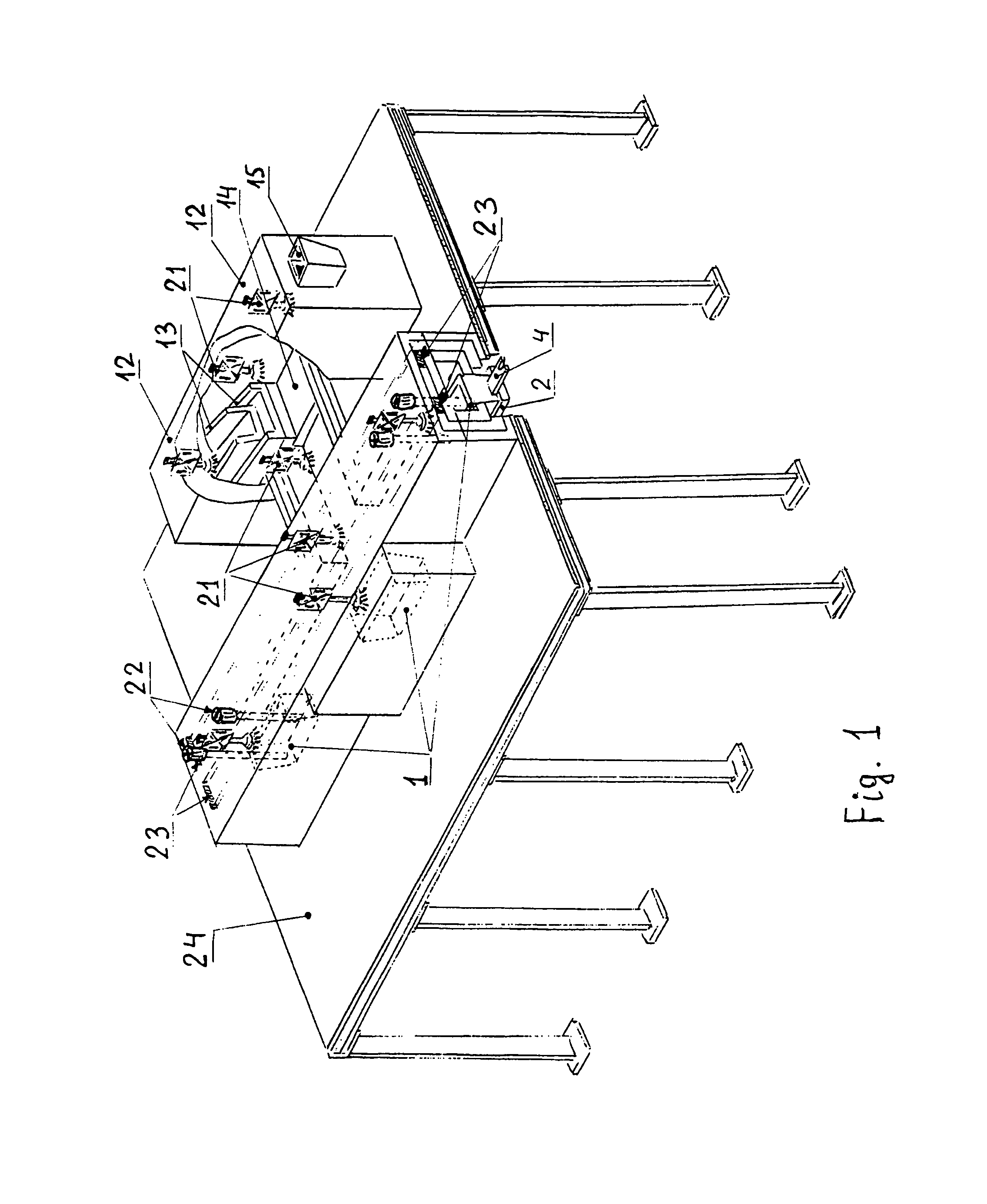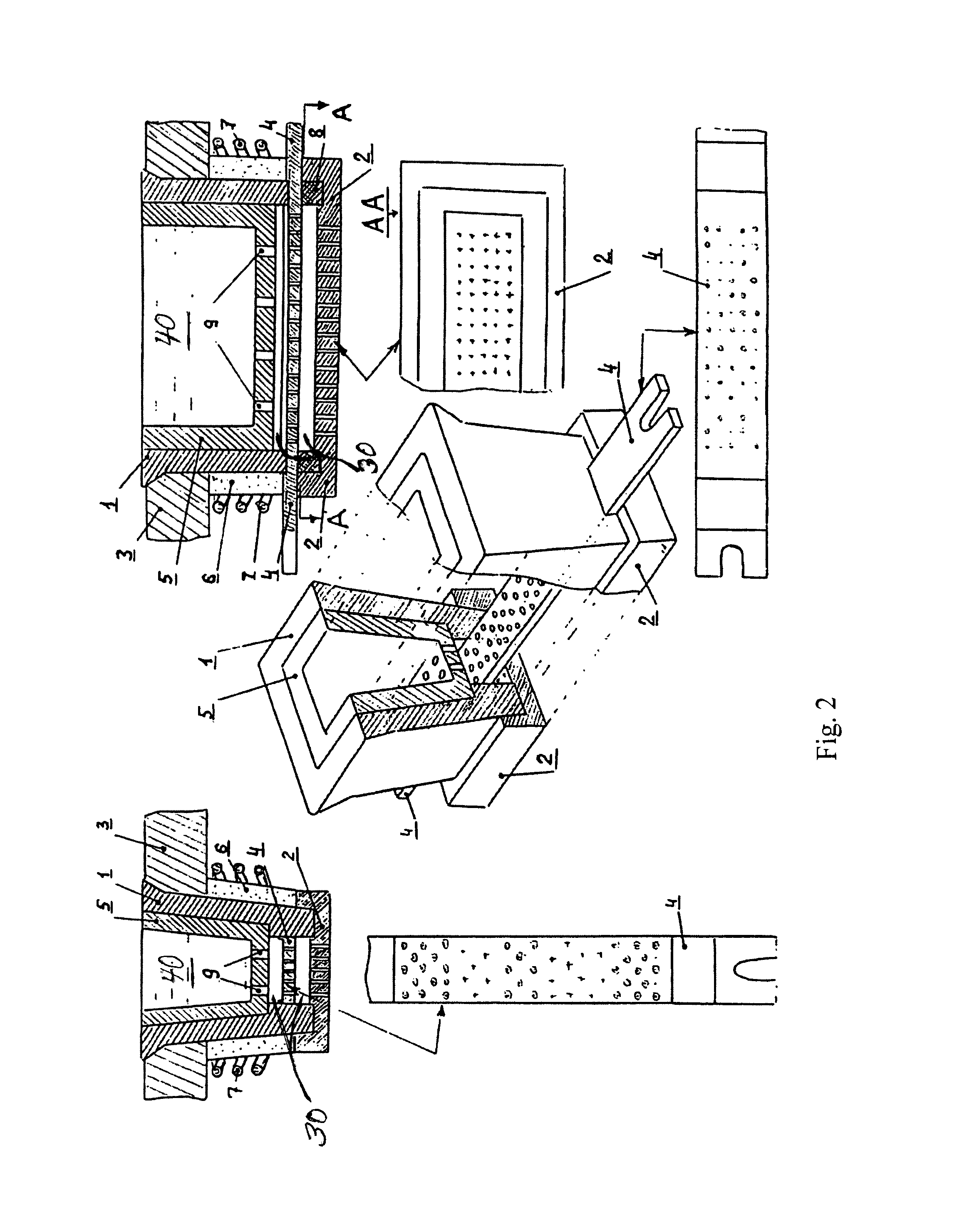The low efficiency of the continuous basalt fibers production (when compared to that of E-
glass fiber) essentially limits their commercial compatibility, even the properties of basalt
fiber in many aspects better than that of E-glass fibers.
a)—the temperature of fiberization of continuous basalt fiber (roving) is about 200-250 degree centigrade greater than that of borosilicate E-
glass fiber (containing roughly 10% of
boron oxide). The high temperature
processing of basalt fiber production increases the Pt-Rd busing deterioration (
creep, sag, etc.).
b)—basalts by
chemical composition present basic igneous rocks which containing the iron oxides in range of 7-15% (by
mass).
These factors provide negative
impact on basalt fiber products cost.
However no yet bushings for basalt fiber roving are designed which operating as much long as Pt-Rd bushings for E-
glass fiber industry.
Apparently fiber become brittle due to presence of crystalline phase traces.
The poor mixing and the hydrodynamic conditions of previously disclosed apparatuses do not allow complete decomposing of the high
melting point contaminants.
Even the traces of crystalline phase reduce the properties of fibers.
The clusters tend to grow that cause the clogging of the orifices and the breakage of the continuous fiber.
The effectiveness of the heat-treatment of glass body inside of the bushing, however is reduced, if the distance from the upper chamber (where the heat-treatment operation is provided) and the
discharge wall at the bottom of the lower chamber (where from a glass body is delivered to the orificed
discharge wall) too big, and the temperature inside of the lower chamber of bushing is not well controlled—main disadvantages of U.S. Pat. No. 6,647,747.
However all metallic bushing suffer limited temperature operation, which is commonly not enough great to complete decompose the high
melting point components which are presented in most basic basalt rocks.
Therefore all apparatuses in mentioned patents (are disclosed before the U.S. Pat. No. 6,647,747) exhibit
disadvantage as regarding limited capability to complete decomposing of high-
melting point contaminants during homogenization.
They all routinely exhibit lock mixing, poor turbulence during melting process and poor volatile elements degassing which is important when the
natural material basalt rock is used.
The bushings in mentioned above patents appear exhibit drawback of glass body mixing, poor turbulence to flow and as result not complete the volatile elements degassing.
The apparatuses are designed to manufacture continuous
borosilicate glass fibers are not require efficient mixing, turbulence to flow and degassing.
Basalt fiber roving manufacturing is tough process.
The fibers made from basalt rocks exhibit many attractive properties for a variety of applications and especially for reinforced concrete applications, where the low cost E-glass fiber cannot be used because have not sufficient properties.
E-glass fiber tends to deteriorate in the alkaline environment which is typical for
cement based materials.
E-glass fibers also deteriorates when is subjected to the action of the outdoor freeze-thaw
exposure.
The low efficiency of the basalt glass body preparation came from the apparatuses for manufacturing borosilicate fiber.
The major problem of apparatuses designed for manufacturing glass fiber is their low-efficiency if they used to produce basalt fiber roving.
Because poor mixing and not complete the high melting point complex oxides destruction / decomposing.
Most apparatuses exhibit poor
convection at the bottom, great gradient of basalt glass body
viscosity at the depths chiefly due to the low heat transparent properties of basalt glass body, especially when
gas heating is applied and gas burners are positioned on the top (on seal) of apparatus.
The high
viscosity causes the drawback of hydrodynamic characteristics at the depth greater 50 mm.
The poor hydrodynamic characteristics are typical not only for bath type apparatus (discussed above), but also for horizontal apparatuses having straight
stream basalt glass body to flow.
However the accumulation of
high gravity contaminants (which commonly appear high melting point
metal oxides) is not endless process.
Upon accumulation the high-melting /
high gravity contaminants sooner or later lead to the orifices clogging if they do not outlet from the furnace.
Therefore the breakage and the reduction of the mechanical properties of basalt fibers (lowering the strength and the flexible properties) becomes substantial for apparatuses having poor glass body mixing and homogenization.
The concept of improvement in this patent based on variation of depths of bath /
forehead ratio is not enough efficient when basalt rock is used.
These improvements cannot prevent the problems which inherent mentioned above FSU and Ukrainian / Russian apparatus are designed to manufacture basalt fiber: low efficiency of basalt rocks melting and poor turbulence of melted glass body flow.
The traces of crystalline phases make fibers brittle.
Eventually coarse basalt fiber at the diameters greater than 20 micrometers (μm) appear substantially brittle properties that limits their applications for Three-Dimension
Fiber Reinforced Concrete (3D FRC).
This apparatus and method for forming fibers, however, exhibits poor volatile elements outlet during glass body distribution from the center to the
peripheral bores of the bushing block.
The
system of blocks of bushing bores made of
refractory materials are not designed for glass body mixing and turbulent to flow and therefore cannot be used to provide basalt glass body homogenization process.
This method is not designed to make continuous basalt fibers (even a mixture of basalt and diabase melt is mentioned in this patent).
However blasting process cannot be used to produce continuous basalt fiber (roving).
However this method is not available to produce continuous basalt fibers.
This method does not prevent the appearance of crystalline phase even at high speed rotations of spinner.
These bushings, however, tend to
creep or deform in service when applied to basalt fiber roving manufacturing due to high temperature fiberization in range of 1300 C. The
creep or deformation adversely effects fiber quality.
The deformation or “sag” requires the bushing to be prematurely removed from service.
However, the apparatus—bushing are disclosed in this patent exhibit limited temperature of homogenization which cannot be increased due to metallic
discharge wall.
These apparatus or bushing cannot be used to manufacture mineral (basalt) fibers from natural rocks containing a high melting point complex oxides.
A such design of apparatus—feeder or bushing also cannot be used to manufacture mineral basalt fibers from natural rocks.
It cannot sufficiently homogenize the glass body of basalt rocks.
There is also problem to maintain 1450 C nearby the discharge wall made from ceramic orificed plates.
All together these factors do not allow maintain uniformity of the temperature in the area of discharge wall (U.S. Pat. No. 6,674,747).
 Login to View More
Login to View More 


